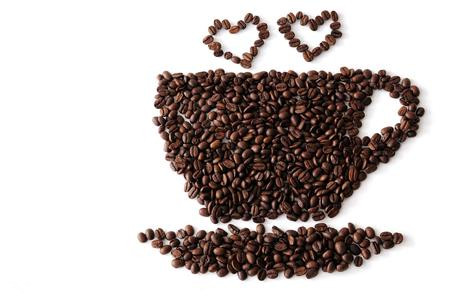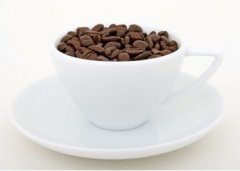Coffee Bean Quality Coffee Bean Quality Grading Coffee Bean Grading Tips

There is no internationally accepted standard for coffee quality grading, and the grading method varies from country to country. Therefore, coffee classification is based on some of the characteristics applicable to each producing country. Samples of coffee beans taken from a bag are judged according to the standards of the producing country, rated against these samples, and the characteristics of most coffee grades are as follows:
Shape (size, uniformity, color of beans), the number of missing beans in the sample, the quality of the cup, including ignorance and mellowness, as well as the roasting degree of coffee beans. Different grades and terminology vary from country to country, so the standard of coffee quality is only related to the type of coffee produced in that country, and it is difficult to understand the true quality of coffee if you are not familiar with a country's original classification criteria. But at least there is a fixed and unified reference between each country: the size of coffee beans is determined by a standardized sieve, so buyers do not have to count the size of coffee beans from the producer's point of view.
A coffee bean may have a special place name, or be treated (washed or unwashed), or it may have a title, or just a letter or number after it. In some countries where the coffee industry is nationalized, the grading system seems to be uninteresting, such as Kenya, where a bag of coffee may be: washing AA, with a number to indicate a 1/10 cup of quality, and this ordinary-sounding coffee is considered by most experts to be one of the best in the world.
Most Caribbean and Central American countries express quality in terms of altitude. Like the eastern part of Costa Rica produces LGA kLaW Graven Atlanti. Atlantic low altitude), MGA (Medium Graven Atlanti. Mid-Atlantic altitude), HGA (High GraumAtlantic Atlantic High altitude); West Bank slopes produce HB (Hard Bean hard beans), MHB (Medium Hard Bean Intermediate hard beans), GHB (Gaad Hard Bean excellent hard beans) and SHB (Strictly Hard Bean very hard beans). The harder the beans are and the higher the altitude is, the higher the price will be. Costa Rica's best plantations mark their bags and sea dips, and like Nicaragua, Costa Rica uses exotic regional names. Guatemala's elevation is blurred, from 700m to 1700 m: "Good Washed" (good water washed beans), "Extra Good Washed' (super water washed beans)," PrimeWashed "(excellent water washed beans)," Extra PrimeWashed "(super grade water washed beans)," Semi Hard Bean (SH) "semi-hard beans, `Hard Bean (HB)" hard beans, "Fancp Hard Bean" super hard beans and "Strictly Hard Bean (SHB)" very hard beans.
National grading system
Countries that clearly identify different qualities of coffee include Brazil and other countries. Classify each coffee bag according to the variety of coffee, or according to the name of the port of shipment (Santos, Parana, etc.). Then there is the case of short beans, such as NY (which means "we calculate the number of beans in a way that American countries can understand") and Standard 3 (which means "12 beans per 300g sample"), which also includes stones and twigs. The Brazilian classification system also includes the size, color, density, shape, baking potential, cup quality, processing method, age and batch number of coffee trees.
Ethiopia is simply graded by treatment, name of origin, and a hierarchical number from 1 to 8 (each number represents the number of beans owed). Indonesia has changed the Dutch grading system in the last year or two. Now R (Robusta) is Roberta, A (Arabica) is Arabica, WP (WetProcessed) is washing, DP (DryProcessed) is dry processing, divided into six levels, 1 and 2 are high, 3 and 4 are intermediate, 5 and 6 are low. The AP after the graded number indicates that after being polished, M and S represent the large, medium and small size of the bean. For example, "R/DP Grade2L" refers to dried large grains of premium Roberta coffee beans, and "A/WP Grade 3/AP" refers to Arabica coffee beans that have been washed and polished in intermediate water.
Most coffee-exporting countries set up or commission a department to establish standards to manage and monitor coffee trade and to control coffee quality through inspectors. Many countries have set up coffee departments directly, while others have set up associations under the agricultural or industrial and commercial sectors.
Coffee bean grading noun
The following terms may have different meanings from one country to another, but they are generally accepted definitions that help people distinguish one coffee bean sample from another.
Black bean Black Bean: beans that suffer from insect pests, dead fruits that fall to the ground before harvest, decomposed beans, beans that are overripe, contaminated by foreign objects such as metals. Golden Bean: the size of beans is between medium beans and soybeans.
Broken beans Broken Bean: beans that are too dry and fragile are easily broken into pieces when shelled.
Brown bean Brown Bean: in Arabica coffee beans, it is used to indicate overcooked, overfermented, underfermented (light brown), or dirty coffee that has not been washed in advance.
Discolored beans Discolored Bean: coffee beans of any abnormal color (green or blue beans in Arabica, khaki, light brown, light yellow beans in Roberta) may indicate poor processing or poor taste.
Elephant ear Elephant Ear: a deformed coffee cherry with a large bean half surrounded by a small bean. The two beans can be separated during baking, but the taste will not be destroyed.
Elephant bean Elephant Bean: commonly known as the variety of Malaggippe, the largest coffee bean in the world. It is good to bake and has a supple fragrance. It is generally regarded as valuable beans. But it gradually disappears because of small economic profits, so don't be confused with elephant ear beans.
Floating bean Floater: beans that are ripe, overripe, or brown due to low density floating on the water when washed.
Fox bean (red thirsty color) Foxy Bean: coffee beans that are slightly red due to overripe, yellow, frost-spoiled coffee beans that are overfermented (delaying the removal of flesh).
Hard bean Hard Bean: a common Arabica coffee bean that is low above sea level in some countries that produce the best quality "extremely hard beans". Don't be confused with the "hard" taste.
Peeled coffee Hull Coffee: dried coffee beans remove the dried fruit before removing the shell.
Natural bean Natural Bean: refers to dried coffee beans.
Gray bean Pale: yellow, from immature or drought-affected coffee cherries, which do not achieve a satisfactory dark color during roasting. The presence of gray beans can spoil the taste of a batch of coffee.
Endocarp Parchment: the protective film or coat that surrounds coffee beans in coffee cherries. If it is to be used for seed germination, the film must be intact, that is, "skinned".
Bead Peaberry: a small coffee cherry with only one round bean (deformed) in it. Beads of the same kind are sorted together, and they sell at a higher price than ordinary coffee beans, even those grown in the same tree.
Pod Pod: coffee beans that are surrounded by dried flesh after peeling, belonging to the missing beans in the sample.
Coffee beans crushed by peeling machine Pulper-Nipped: bitten while peeling will degrade the quality.
Quaker: much like gray beans, although the term is sometimes used interchangeably with gray beans, it is not caused by fruit ripening.
Rough Ragged: coffee beans that are stunted due to drought.
Smelly bean Stinker: coffee beans that are overripe, overfermented or affected by diseases and insect pests. The smell of beans is generally rotten and moldy. Generally speaking, it can not be distinguished by the naked eye, and when it passes through the ultraviolet light of the electronic classifier, it appears red, which will affect the whole batch of beans.
Extremely hard beans Strictly Hard Bean (SHB): the quality of Arabica coffee grown at extremely high altitudes, with high density and good flavor of beans.
Very high altitude bean Strictly High Grown (SHG): different grading terms that are basically the same as those for very hard beans.
Out-of-class Triage: the lowest grade coffee beans, which cannot be exported, are discarded.
Non-washed Unwashed: dry processed coffee beans.
Washed Washed: washed coffee beans.
Yellow bean Yellow Bean: in Arabica, yellow coffee beans caused by overdrying.
Important Notice :
前街咖啡 FrontStreet Coffee has moved to new addredd:
FrontStreet Coffee Address: 315,Donghua East Road,GuangZhou
Tel:020 38364473
- Prev

Drinking coffee does not increase the risk of chronic diseases coffee health knowledge
Drinking coffee does not increase the risk of chronic diseases such as heart disease or cancer, but helps reduce the risk of type 2 diabetes, according to a 10-year study of more than 40,000 people. The study, published recently in the American Journal of Clinical Nutrition, said the results of previous studies were quite divergent, with some suggesting that coffee drinking was associated with heart disease
- Next

The extraction method of coffee the core process of the extraction principle
When it comes to brewing coffee, there are many kinds of coffee-making equipment and different methods on the market. But in terms of the principle of coffee extraction, it's all the same. The core process of the extraction principle is: (1) grind coffee beans to increase the surface area of coffee in contact with water; (2) fully soak coffee powder in aqueous solution and hydrophilically dissolve coffee essence; (3) separate coffee solution and coffee grounds.
Related
- Detailed explanation of Jadeite planting Land in Panamanian Jadeite Manor introduction to the grading system of Jadeite competitive bidding, Red bid, Green bid and Rose Summer
- Story of Coffee planting in Brenka region of Costa Rica Stonehenge Manor anaerobic heavy honey treatment of flavor mouth
- What's on the barrel of Blue Mountain Coffee beans?
- Can American coffee also pull flowers? How to use hot American style to pull out a good-looking pattern?
- Can you make a cold extract with coffee beans? What is the right proportion for cold-extracted coffee formula?
- Indonesian PWN Gold Mandrine Coffee Origin Features Flavor How to Chong? Mandolin coffee is American.
- A brief introduction to the flavor characteristics of Brazilian yellow bourbon coffee beans
- What is the effect of different water quality on the flavor of cold-extracted coffee? What kind of water is best for brewing coffee?
- Why do you think of Rose Summer whenever you mention Panamanian coffee?
- Introduction to the characteristics of authentic blue mountain coffee bean producing areas? What is the CIB Coffee Authority in Jamaica?

